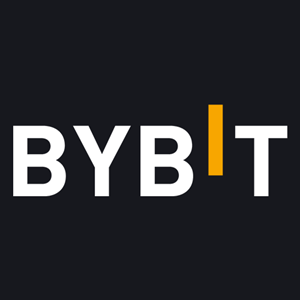How to Identify and Avoid Crypto Scams: A Security Guide for Investors April, 2025
The cryptocurrency market's rapid growth has attracted sophisticated scammers who exploit its decentralized nature to defraud users of billions. This comprehensive guide helps investors identify and protect themselves from common crypto scams while providing practical steps for using trusted platforms.
 Written by Nikolas Sargeant
Written by Nikolas Sargeant
| Taxas da Bolsa | Métodos de Depósito | |||||||||
|---|---|---|---|---|---|---|---|---|---|---|
| nome | Criptos Suportadas | Taxa de Tomador | Taxa de Autor | Taxas de Saque | Transferência Bancária | Cartão de Crédito | Investidor dos EUA permitido | ACTIVO DESDE | Offer | |

Bybit
Contract Trading Exchanges
|
182 | 0.06% | 0.01% | 0.0005 | 2018 |
RECEBA ATÉ US$600 EM RECOMPENSAS
|
Visita | |||

PrimeXBT
Contract Trading Exchanges
|
34 | 0.01% | 0.02% | 0.0005 | 2018 |
GET 35% DEPOSIT BONUS
|
Visita | |||

Binance
Centralized Exchanges
|
431 | 0.10% | 0.10% | 0.0002 | 2017 |
RECEBA ATÉ US$100 EM BÔNUS DE BOAS-VINDAS
|
Visita | |||

KuCoin
Centralized Exchanges
|
638 | 0.10% | 0.10% | 0.0005 | 2017 |
RECEBA ATÉ 500 USDT EM BÔNUS DE CADASTRO
|
Visita | |||

Bitget
Contract Trading Exchanges
|
297 | 0.10% | 0.10% | 0.0005 | 2018 |
NEGOCIAÇÃO SPOT COM TAXAS BAIXAS!
|
Visita | |||
The cryptocurrency market has witnessed explosive growth in recent years, attracting millions of investors seeking opportunities in this innovative financial landscape. However, this rapid expansion has been accompanied by a surge in sophisticated scams, taking advantage of the crypto space's decentralized nature and relative lack of regulation. In 2023 alone, cryptocurrency-related fraud resulted in billions of dollars in losses, affecting both novice and experienced investors.

The combination of blockchain technology's anonymity and the complex technical nature of cryptocurrencies creates a perfect environment for fraudsters to operate. Many investors, drawn by the potential for high returns, find themselves vulnerable to increasingly sophisticated schemes that exploit both technical vulnerabilities and human psychology.
This comprehensive guide aims to equip investors with the knowledge and tools needed to identify, avoid, and protect themselves from crypto scams. Whether you're new to cryptocurrency or an experienced trader, understanding these security principles is crucial for safeguarding your investments in this rapidly evolving digital asset space.
1. Understanding Crypto Scams
A cryptocurrency scam is any fraudulent scheme that uses digital assets or blockchain technology to deceive investors and steal their funds. These scams exploit the decentralized nature of cryptocurrency, which often means transactions are irreversible and difficult to trace.
The decentralized structure of cryptocurrency, while one of its greatest strengths, also presents unique challenges in combating fraud. Unlike traditional financial systems, there's no central authority to reverse fraudulent transactions or compensate victims. Once cryptocurrency is transferred to a scammer's wallet, it's typically impossible to recover without the private keys.
Scammers employ sophisticated psychological tactics to manipulate potential victims. They often create a false sense of urgency, playing on the fear of missing out (FOMO) on potentially life-changing opportunities. They might promise guaranteed returns, exploit trust in celebrity figures, or create elaborate fake communities to lend legitimacy to their schemes.

Recent years have seen staggering losses due to crypto scams. According to blockchain analytics firms, crypto-related fraud has resulted in losses exceeding $10 billion annually. These numbers continue to grow as scammers develop more sophisticated methods and target an expanding pool of crypto investors.
2. Common Types of Crypto Scams
From elaborate investment schemes to technical exploits, crypto scams come in many forms. Here's a detailed examination of the most prevalent types.
2.1 Rug Pulls
A rug pull occurs when project developers abandon a project and run away with investor funds. The Squid Game Token incident serves as a notorious example, where developers disappeared with millions after the token's price skyrocketed, leaving investors with worthless tokens.
To identify potential rug pulls, examine liquidity locks, developer token allocations, and team transparency. Be particularly wary of projects with anonymous teams or those that restrict selling tokens while allowing purchases.
2.2 Phishing Attacks
Cryptocurrency phishing attacks involve creating convincing duplicates of legitimate websites, wallets, or exchanges to steal login credentials and private keys. Scammers often send emails impersonating popular platforms like Binance or Coinbase, directing users to fake login pages.

Common tactics include slightly misspelled domain names, urgent security alerts, or promises of rewards requiring immediate action. Always verify website URLs carefully and use bookmarks for accessing cryptocurrency platforms.
2.3 Ponzi & Pyramid Schemes
Crypto Ponzi schemes promise high returns paid from new investor deposits rather than legitimate business activities. BitConnect stands as one of the most infamous examples, promising up to 40% monthly returns before collapsing and causing $2.4 billion in losses.
Red flags include guaranteed returns, complex reward structures, and pressure to recruit new investors. Legitimate investments never guarantee profits, especially in the volatile crypto market.
2.4 Pump & Dump Schemes
These schemes involve artificially inflating a cryptocurrency's price through coordinated buying and misleading promotions, followed by a massive sell-off by the organizers. Social media influencers often promote these schemes, receiving payment to hype tokens before the dump.
Watch for sudden price spikes accompanied by aggressive promotion on social media, especially for low-market-cap tokens with limited trading history.
2.5 Fake Wallets & Exchanges
Fraudulent wallets and exchanges steal funds by impersonating legitimate services or creating entirely new platforms that disappear after accumulating sufficient user deposits.

Before using any platform, verify its reputation through independent reviews, check security certifications, and start with small test transactions.
2.6 Social Media & Impersonation Scams
Scammers frequently create fake profiles of cryptocurrency celebrities, projects, or exchanges on social media platforms. They often announce fake giveaways or airdrops requiring users to send cryptocurrency to participate.
Always verify official social media accounts through multiple sources and remember that legitimate projects never require you to send cryptocurrency to receive rewards.
2.7 Smart Contract Exploits & Honeypots
Malicious smart contracts can contain hidden functions allowing developers to steal funds or prevent users from selling tokens. Honeypot schemes specifically trap investors by allowing purchases but blocking sales.
Use blockchain explorers and smart contract analysis tools to review code before investing. Watch for red flags like unverified contracts or functions that restrict token transfers.
3. Red Flags to Watch Out For
The cryptocurrency space is filled with opportunities, but it also attracts scammers looking to exploit investors. To protect yourself, be on the lookout for these key warning signs that often indicate fraudulent schemes.

3.1 Guaranteed Profits and Unrealistic Returns
One of the most common red flags in crypto scams is the promise of guaranteed profits or high, consistent returns. No legitimate investment, especially in a market as volatile as cryptocurrency, can assure risk-free gains. Scammers often entice investors by claiming their project offers fixed daily or weekly returns, sometimes reaching unrealistic percentages like 10% per day or 100x gains in a month. Be skeptical of any project that presents itself as a surefire way to get rich quickly—it’s almost always a trap.
3.2 Anonymous or Unverifiable Team Members
A trustworthy crypto project is typically backed by a transparent team with verifiable credentials in blockchain technology, finance, or a related field. If a project's founders and developers remain anonymous, use only pseudonyms, or have no credible professional background, proceed with caution. Scammers often hide behind fake names or stock images to avoid accountability. Before investing, research the team members on platforms like LinkedIn, Twitter, and GitHub to verify their experience and past work. If you find little to no information, it’s a major warning sign.
3.3 Unusual Trading Patterns and Market Manipulation
Scammers frequently use market manipulation tactics to create the illusion of demand and value. Watch out for low liquidity (where a token has very little trading activity) combined with sudden, extreme price spikes—this is often a sign of a pump-and-dump scheme. In these scams, insiders artificially inflate the price, encourage new investors to buy in, and then sell off their holdings, crashing the price and leaving unsuspecting investors with worthless tokens. Always analyze a project’s trading volume and price history before investing.

3.4. Excessive Focus on Hype Over Utility
Genuine blockchain projects prioritize technology, real-world applications, and innovation. If a project focuses excessively on marketing, celebrity endorsements, or social media hype without offering a clear use case, it may be a scam. Scammers use aggressive promotional tactics, including flashy websites, paid influencers, and misleading advertisements, to generate FOMO (fear of missing out) and pressure people into investing. Always ask: What problem does this project solve? If there’s no solid answer, steer clear.
3.5 Suspicious Tokenomics and Unfair Distribution
Before investing, analyze the tokenomics—how tokens are allocated, distributed, and locked. Some red flags include:
- A large percentage of tokens controlled by developers or insiders – This increases the risk of a "rug pull," where they suddenly sell off their holdings, crashing the project.
- No vesting period – Legitimate projects have lock-up periods for team tokens to prevent early dumping. If a project allows immediate withdrawals, it's a major concern.
- High pre-sale or private sale allocations – If most of the tokens were sold in private rounds, public investors could be left at a disadvantage.
4. Using Trusted Exchanges & Platforms
The choice of cryptocurrency exchange stands as one of the most crucial decisions in your crypto security journey. When evaluating platforms, investors must carefully consider both the exchange's security infrastructure and its track record of handling incidents.
Binance, the world's largest cryptocurrency exchange by trading volume, exemplifies many of the security features investors should seek in a trading platform. Beyond basic security measures, the exchange maintains the innovative SAFU (Secure Asset Fund for Users) program, which acts as an emergency insurance mechanism funded by trading fees. When Binance faced a significant security breach in 2019 resulting in the theft of 7,000 BTC, their response demonstrated the importance of choosing a reputable exchange:
- Immediate suspension of all withdrawals to prevent further losses
- Activation of the SAFU fund to fully compensate affected users
- Implementation of additional security measures
- Transparent communication throughout the incident

KuCoin, known as the "People's Exchange," takes a different but equally robust approach to security. The platform has gained popularity among traders seeking newer tokens while maintaining strict security protocols. Their security framework includes:
- Multi-layer wallet architecture for fund protection
- Real-time monitoring systems for suspicious activities
- Regular third-party security audits
- Comprehensive insurance coverage for institutional accounts
When selecting an exchange, consider these essential security factors:
Authentication and Access Modern exchanges should offer multiple layers of security for account access. For instance, Bybit implements a sophisticated multi-factor authentication system that combines traditional 2FA with additional security measures like anti-phishing codes and withdrawal confirmation delays.
Fund Security Leading platforms like PrimeXBT and BitGet maintain segregated accounts for user funds and operational capital. This separation provides an additional layer of protection against potential security breaches or company insolvency.
Risk Management Systems Advanced trading platforms must have robust risk management systems in place. For example, when offering leveraged trading, exchanges should implement:
- Automatic deleveraging protections
- Price manipulation safeguards
- Circuit breakers for extreme market conditions

5. What to Do If You Fall Victim to a Crypto Scam
If you suspect you've been scammed, taking immediate action is crucial. While recovering lost cryptocurrency can be difficult, swift documentation and reporting can assist authorities in investigating the fraud and preventing future scams.
5.1 Document Everything Immediately
Gather all relevant information to create a detailed record of the scam. This will be useful for authorities and security professionals investigating the incident. Ensure you collect:
- Transaction hashes – Unique identifiers for each transaction on the blockchain.
- Wallet addresses involved – Both your wallet address and the scammer’s.
- Communication with scammers – Emails, messages, or any other correspondence.
- Screenshots of relevant information – Save records of transactions, website details, and scam-related interactions before they are altered or deleted.

5.2 Report the Incident to the Appropriate Authorities
Even if recovery isn’t guaranteed, reporting crypto scams helps track fraudulent activities and can prevent others from becoming victims. Notify:
- Local law enforcement – File a police report with all collected evidence.
- Relevant cryptocurrency exchanges – If the scam involved an exchange, inform their fraud department as soon as possible. Some platforms may freeze scam-related accounts.
- Financial fraud authorities – Report to agencies like the Federal Trade Commission (FTC), Financial Crimes Enforcement Network (FinCEN), or other regulatory bodies in your country.
- Blockchain security firms – Companies specializing in crypto security, such as Chainalysis or CipherTrace, may assist in tracking stolen funds.
5.3 Use Blockchain Analytics Tools to Track Stolen Funds
Cryptocurrency transactions are recorded on the blockchain, making them traceable with the right tools. Use blockchain explorers and analytics platforms to monitor fund movements:
- Etherscan, BscScan, or Blockchain.com Explorer – These tools allow you to track and analyze transaction flows.
- Advanced forensic tools like Chainalysis, CipherTrace, or Elliptic – These platforms help investigators track illicit fund transfers and identify scam networks.
While recovering stolen cryptocurrency is rare, taking these steps ensures your case is documented, reported, and contributes to broader efforts against crypto fraud. Always stay vigilant and prioritize security in all your crypto transactions.

6. Conclusion
The cryptocurrency space offers exciting opportunities but requires vigilance and education to navigate safely. Scammers continuously develop new methods to exploit investors, making ongoing education and security awareness essential.
Stay informed about emerging threats and security best practices through reputable cryptocurrency news sources and security forums. Remember that in cryptocurrency, you are your own bank – with that power comes the responsibility to protect your assets carefully.
Consider joining legitimate cryptocurrency communities and educational groups to stay updated on security practices and emerging threats. The best defense against scams is a well-informed, cautious approach to cryptocurrency investment.
For further learning, consult resources from established blockchain security firms, cryptocurrency exchanges' security guides, and regulatory authorities' cryptocurrency fraud prevention materials.
| Taxas da Bolsa | Métodos de Depósito | |||||||||
|---|---|---|---|---|---|---|---|---|---|---|
| nome | Criptos Suportadas | Taxa de Tomador | Taxa de Autor | Taxas de Saque | Transferência Bancária | Cartão de Crédito | Investidor dos EUA permitido | ACTIVO DESDE | Offer | |

Bybit
Contract Trading Exchanges
|
182 | 0.06% | 0.01% | 0.0005 | 2018 |
RECEBA ATÉ US$600 EM RECOMPENSAS
|
Visita | |||

PrimeXBT
Contract Trading Exchanges
|
34 | 0.01% | 0.02% | 0.0005 | 2018 |
GET 35% DEPOSIT BONUS
|
Visita | |||

Binance
Centralized Exchanges
|
431 | 0.10% | 0.10% | 0.0002 | 2017 |
RECEBA ATÉ US$100 EM BÔNUS DE BOAS-VINDAS
|
Visita | |||

KuCoin
Centralized Exchanges
|
638 | 0.10% | 0.10% | 0.0005 | 2017 |
RECEBA ATÉ 500 USDT EM BÔNUS DE CADASTRO
|
Visita | |||

Bitget
Contract Trading Exchanges
|
297 | 0.10% | 0.10% | 0.0005 | 2018 |
NEGOCIAÇÃO SPOT COM TAXAS BAIXAS!
|
Visita | |||